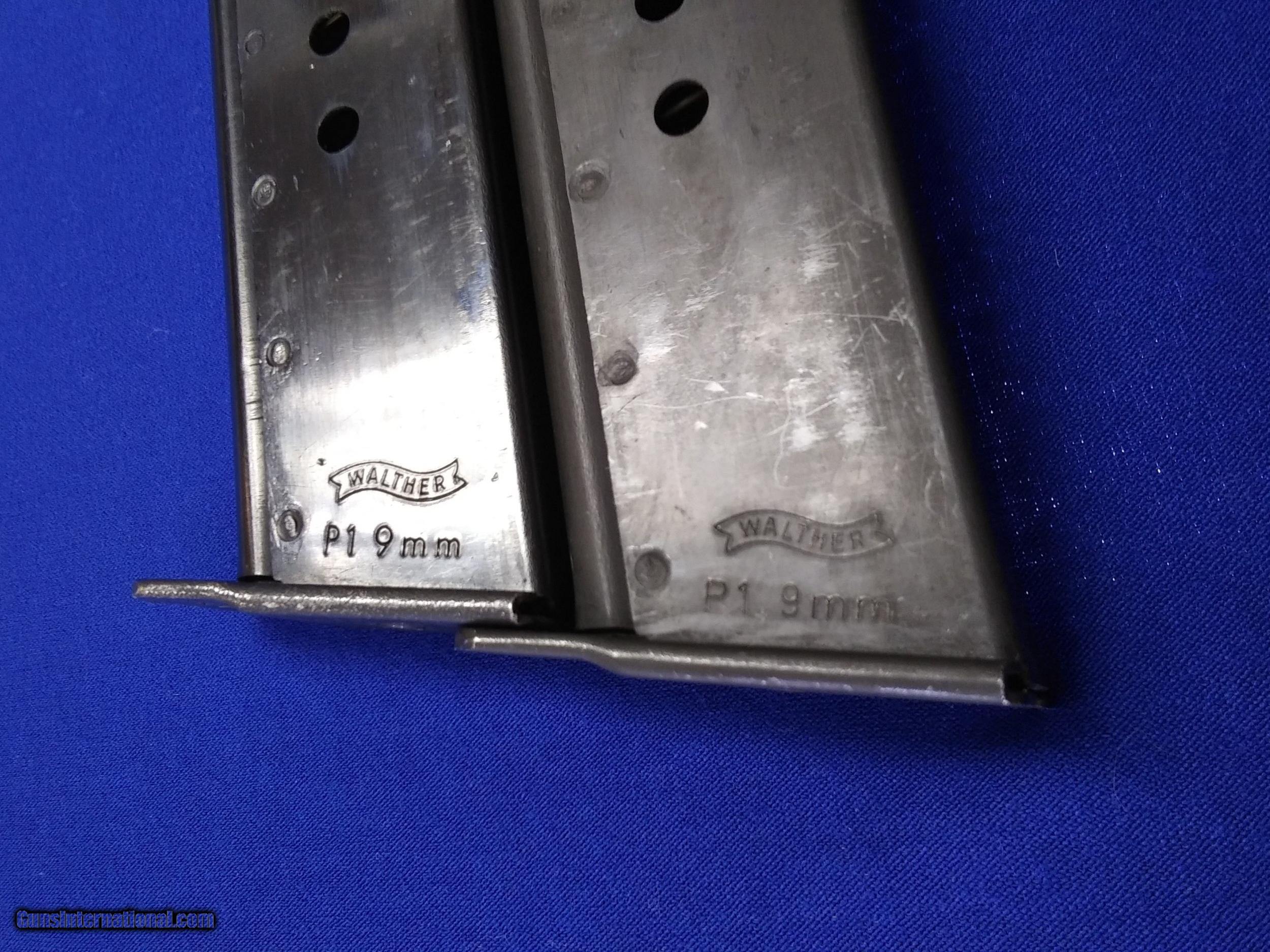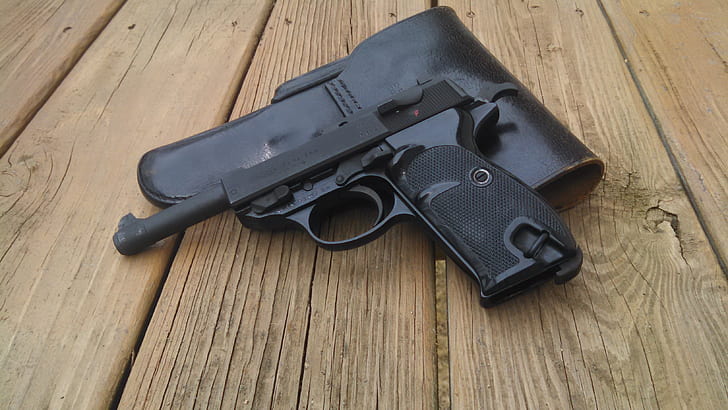

The P38 uses a double action trigger design similar to the earlier Walther PPKs, and a loaded chamber indicator is also incorporated. When fired both the barrel and slide recoil for a short distance, where the locking block drives down, disengaging the sliding and arresting the movement of the barrel. The breech-locking mechanism operates by use of a wedge-shaped locking block underneath the breech. In addition to the 9mm Parabellum version, some 7.65x22mm Parabellum versions were also created and sold.

38 Super, but these were never mass-produced. Several experimental versions were later created in. This led to the subsequent adoption of the P38 in 1940. The first designs submitted to the German Army featured a locked breech and a hidden hammer, but the German Army requested that it be redesigned with an external hammer. A pull of the trigger, with the hammer down, fired the first shot and the operation of the pistol ejected the fired round and reloaded a fresh round into the chamber, all features found in many modern day handguns. The shooter could load a round into the chamber, use the de-cocking lever to safely lower the hammer without firing the round, and carry the weapon loaded with the hammer down. The P38 was the first locked-breech pistol to use a double-action trigger.


 0 kommentar(er)
0 kommentar(er)
